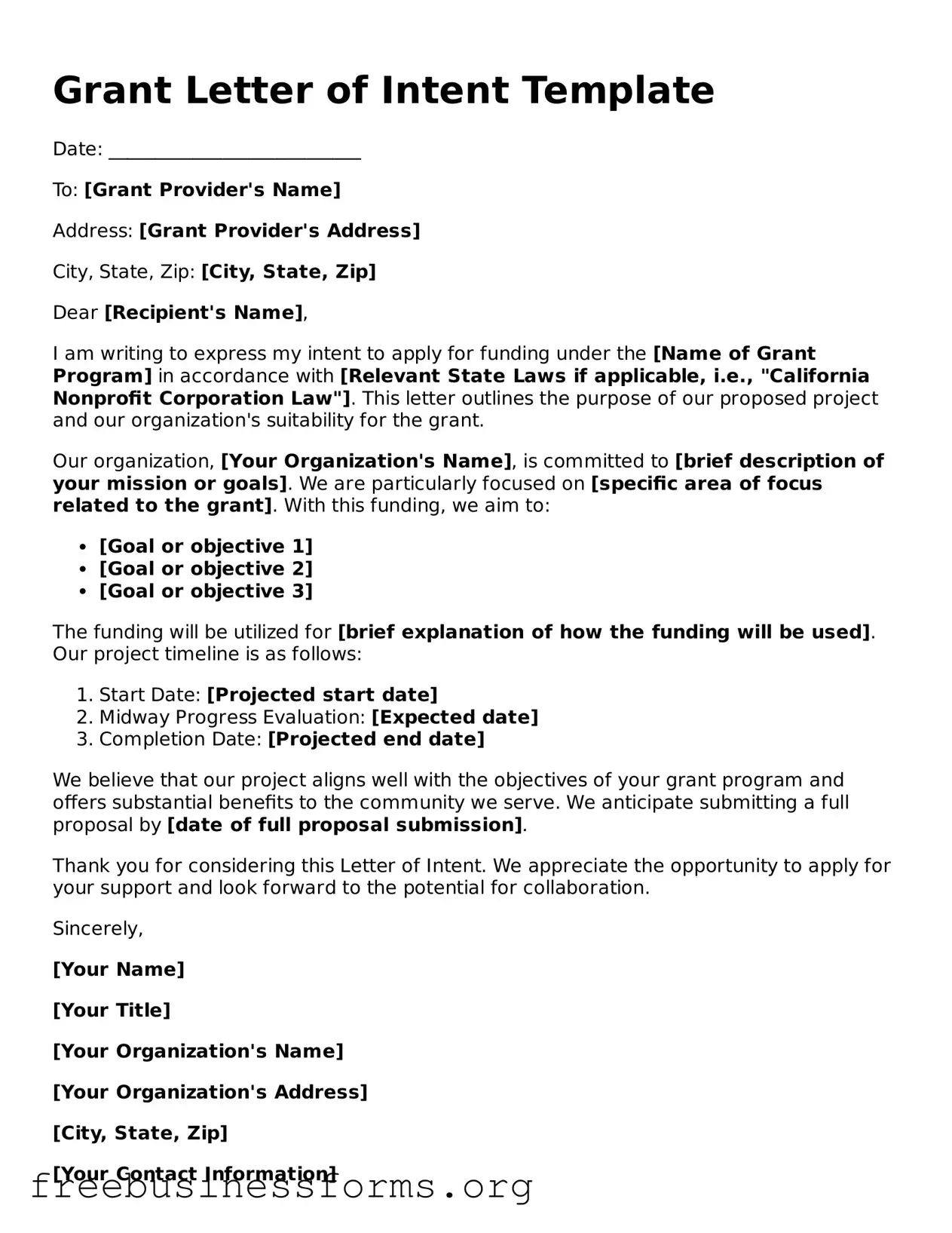Grant Letter of Intent Template
Date: ___________________________
To: [Grant Provider's Name]
Address: [Grant Provider's Address]
City, State, Zip: [City, State, Zip]
Dear [Recipient's Name],
I am writing to express my intent to apply for funding under the [Name of Grant Program] in accordance with [Relevant State Laws if applicable, i.e., "California Nonprofit Corporation Law"]. This letter outlines the purpose of our proposed project and our organization's suitability for the grant.
Our organization, [Your Organization's Name], is committed to [brief description of your mission or goals]. We are particularly focused on [specific area of focus related to the grant]. With this funding, we aim to:
- [Goal or objective 1]
- [Goal or objective 2]
- [Goal or objective 3]
The funding will be utilized for [brief explanation of how the funding will be used]. Our project timeline is as follows:
- Start Date: [Projected start date]
- Midway Progress Evaluation: [Expected date]
- Completion Date: [Projected end date]
We believe that our project aligns well with the objectives of your grant program and offers substantial benefits to the community we serve. We anticipate submitting a full proposal by [date of full proposal submission].
Thank you for considering this Letter of Intent. We appreciate the opportunity to apply for your support and look forward to the potential for collaboration.
Sincerely,
[Your Name]
[Your Title]
[Your Organization's Name]
[Your Organization's Address]
[City, State, Zip]
[Your Contact Information]
